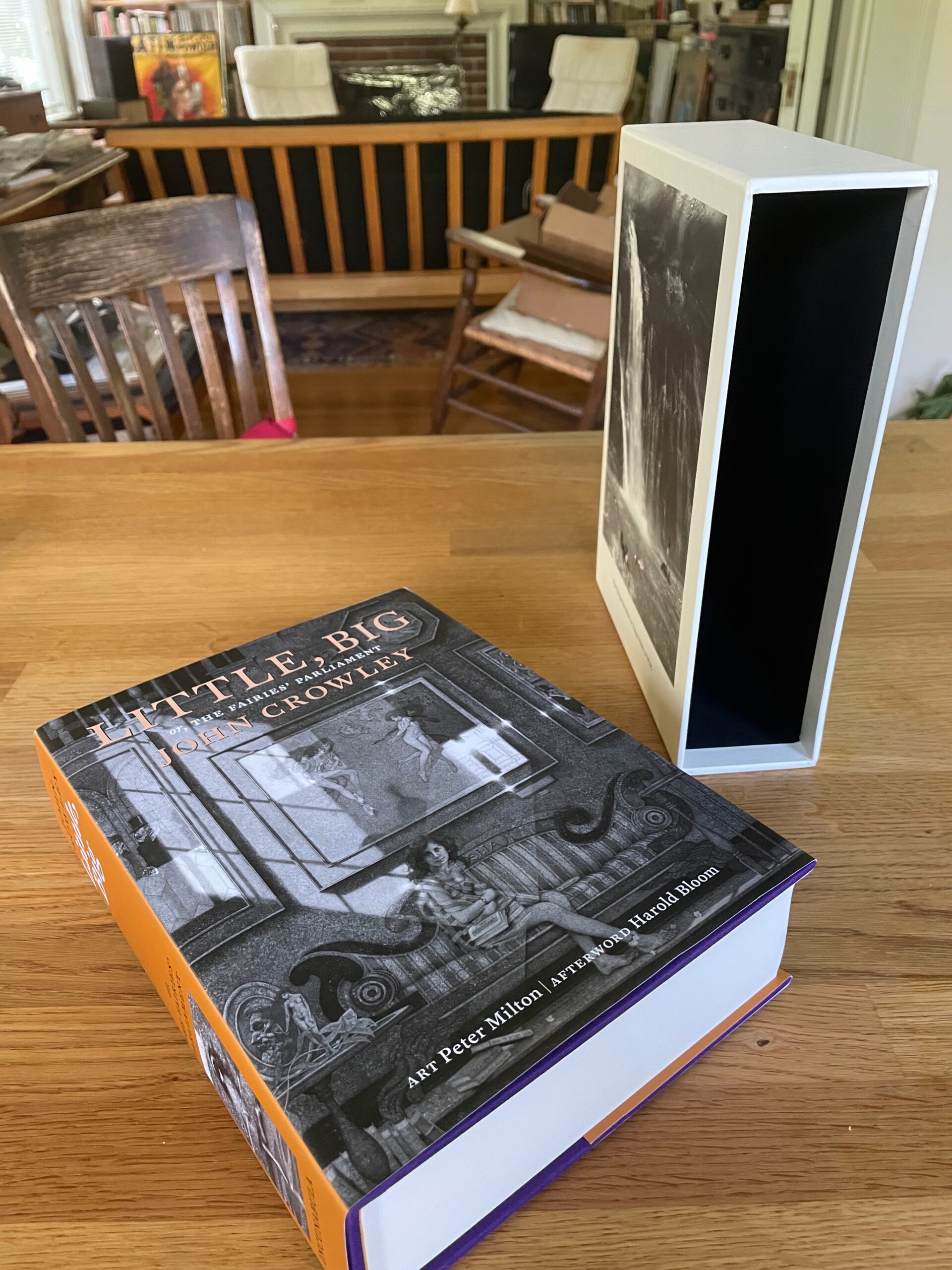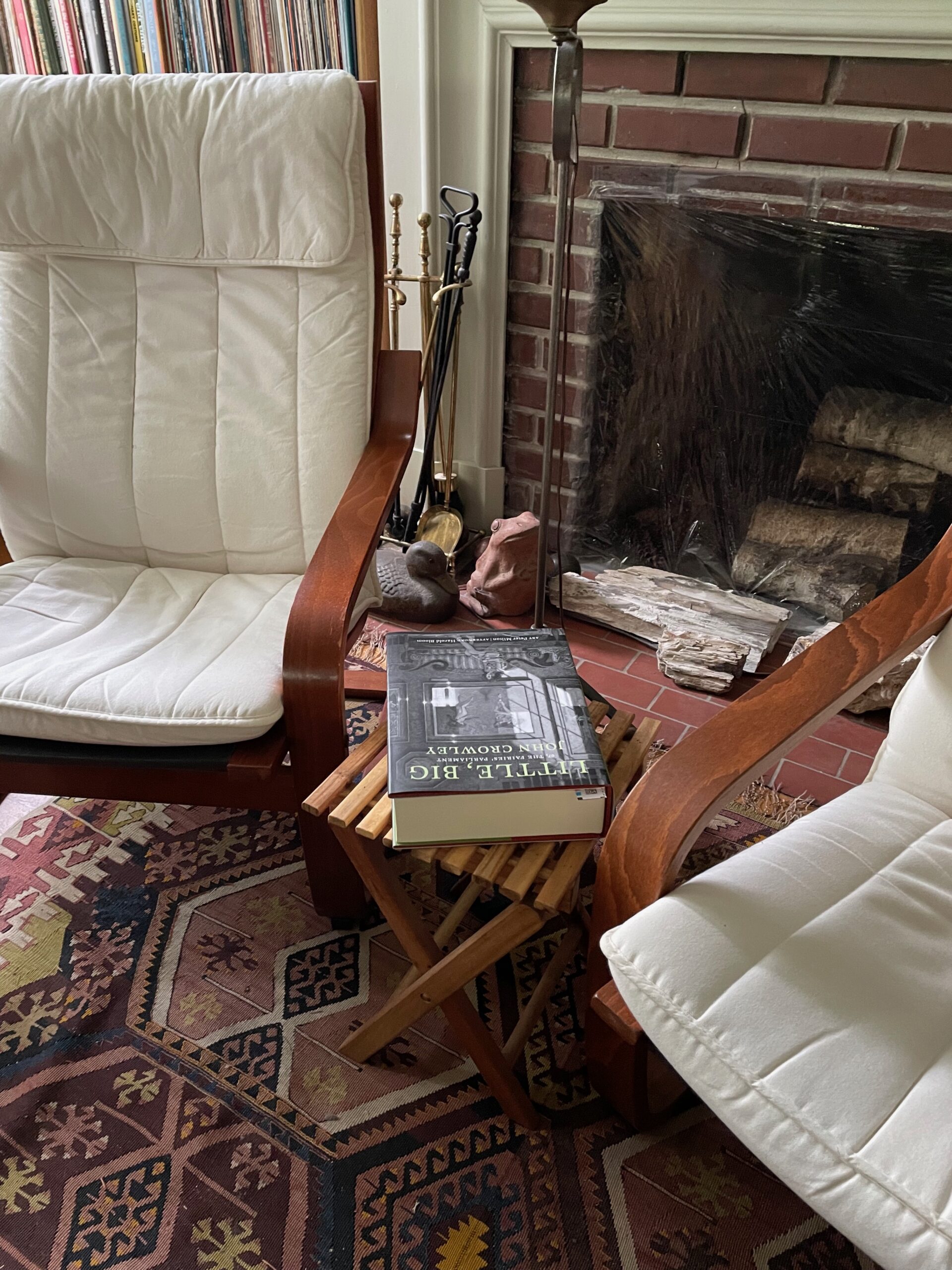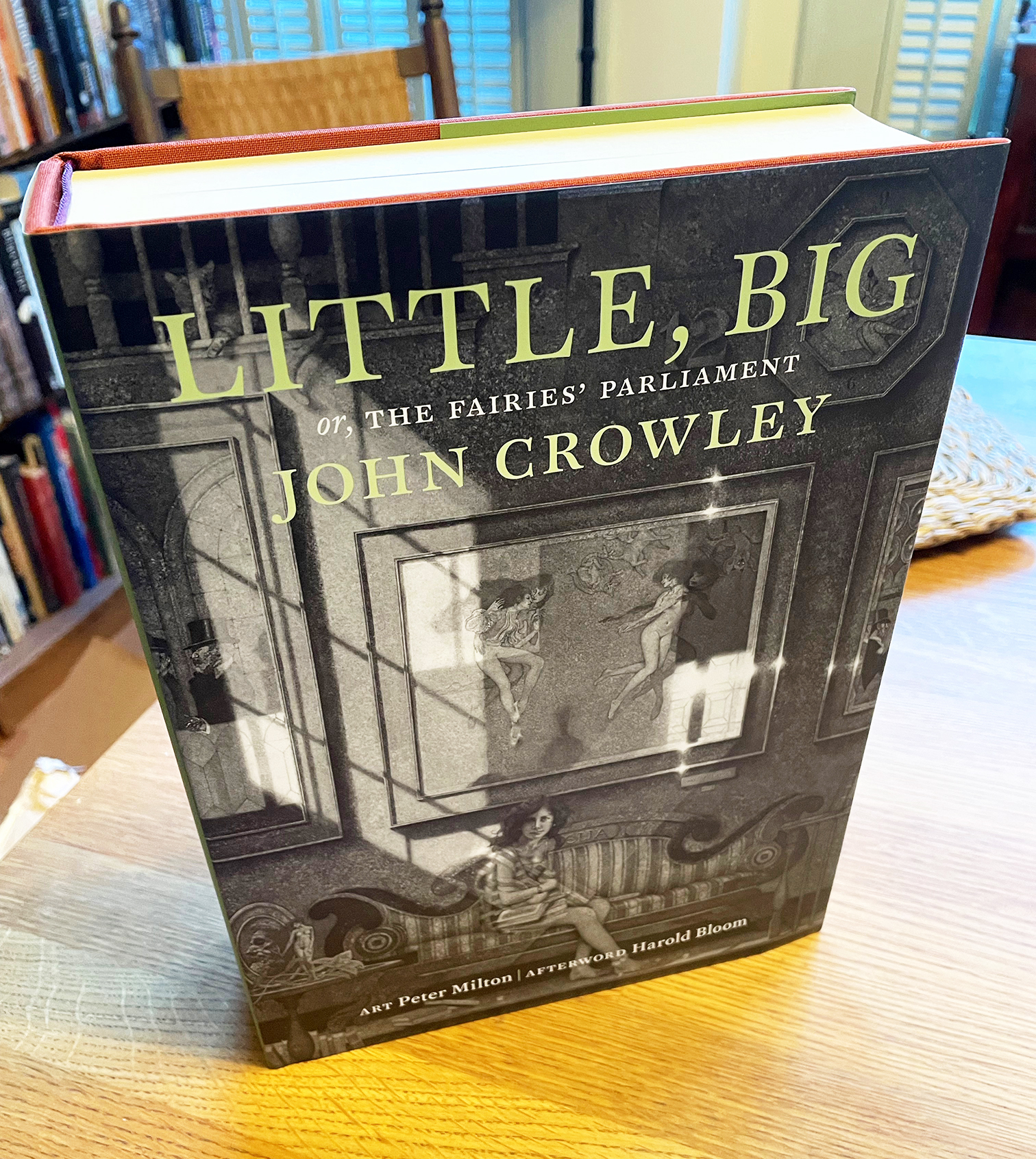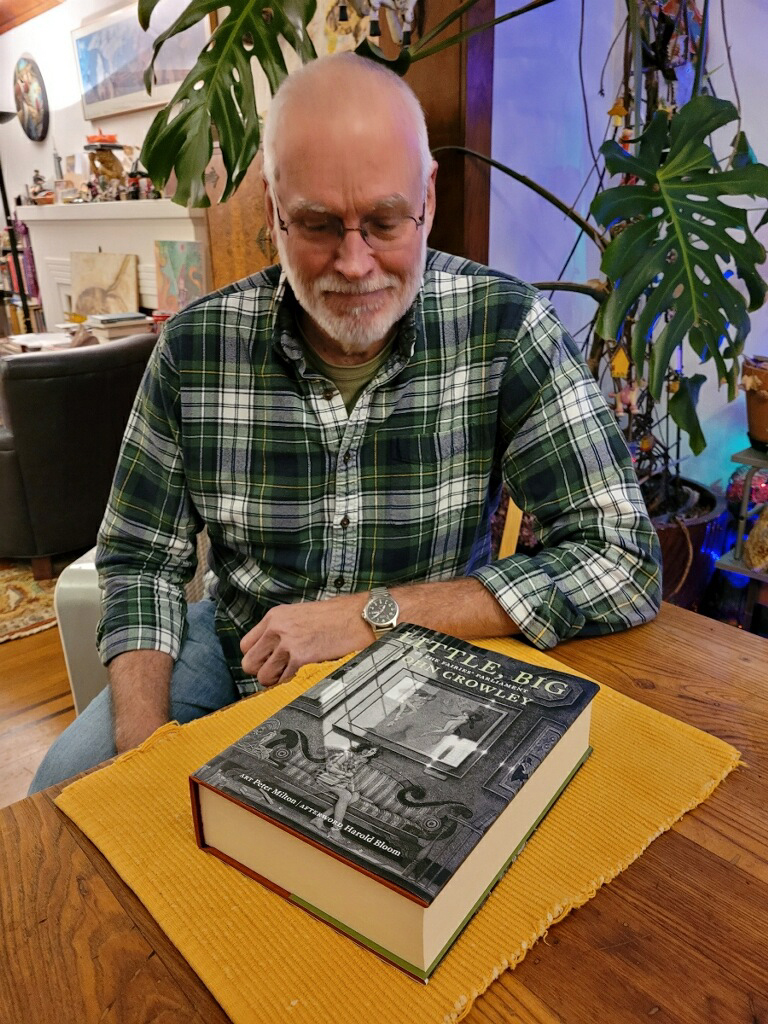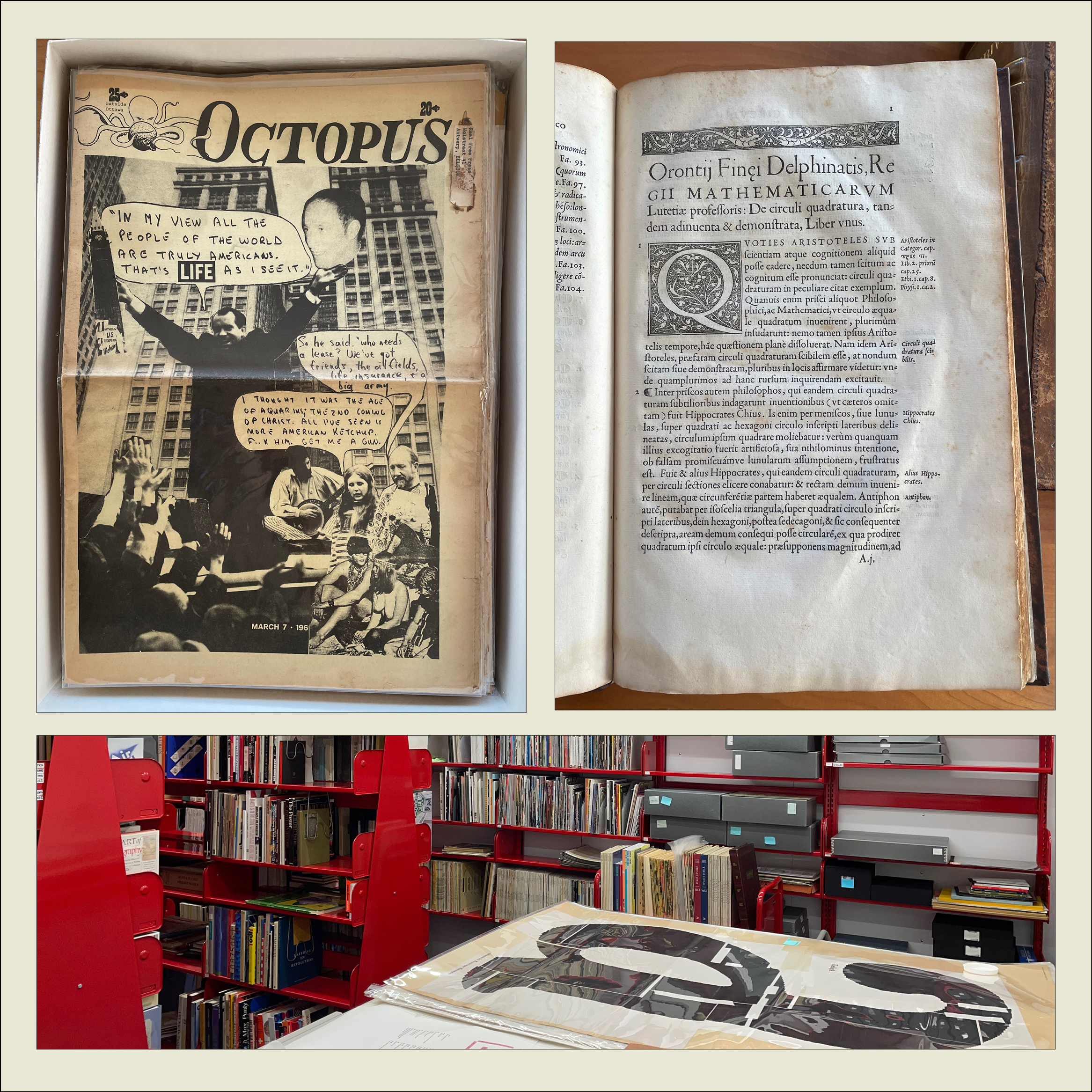At long last, after more than 17 years of ups, downs, and circuitous side trips, the 40th anniversary edition of John Crowley’s Little, Big was published in late 2022, and the limited Numbered and Lettered editions are finally being distributed. The extra delay on the limited editions involved two different shipments of slipcases being lost en route from China, as well as a painstaking on-site check to ensure that each of the individually signed and inscribed four-page signatures got into the right individual copy. Plus, of course, the apparently inevitable twists and turns of fortune that have accompanied this project from the beginning. (Ben Kamm attributes this to the troublesome whims of the fay. I just say it must be Coyote.)
The Trade edition won an award at the Publishing Professionals Network (PPN) Book Show last year. (As manager of the judging team, I was involved in the judging process, but I recused myself from any consideration of my own book. As did judges whose books had been submitted.) The Trade edition itself is a luxurious book: 800 pages including etchings and prints by Peter Milton, exquisitely printed in a 7.5×10-inch format on Mohawk Superfine by Brilliant Graphics in Exton, Pennsylvania. The Numbered and Lettered editions (which sold out years ago) include a new short story by John Crowley, as well as the slipcases with more Peter Milton art. In the Lettered copies, Crowley wrote out a short passage from the novel in his elegant chancery italic handwriting.
The vision behind this project was Ron Drummond’s, publisher of Incunabula and instigator of ambitious undertakings. Ron and I collaborated over many years on the details of the book’s design; the overall page grid and the details of typesetting were mine, with Ron deciding on image trims and specifying the placement of Peter Milton’s art. Ron also commissioned three different essays about the book, to be published on the generous flaps of the dustjackets, one for each of the three editions. (On the Trade edition, which you can still purchase, the essay is by Neil Gaiman.)
It’s been a very long process. As I’ve written before, there were times when I took to referring to this as “Zeno’s book project,” because like Zeno’s arrow it seemed that it would never reach its target. Amazingly, it has. And it seems to be a bulls-eye.
[Images: The three editions of the Little, Big 40th anniversary edition: Numbered (top), Lettered (middle), and Trade (bottom).]


